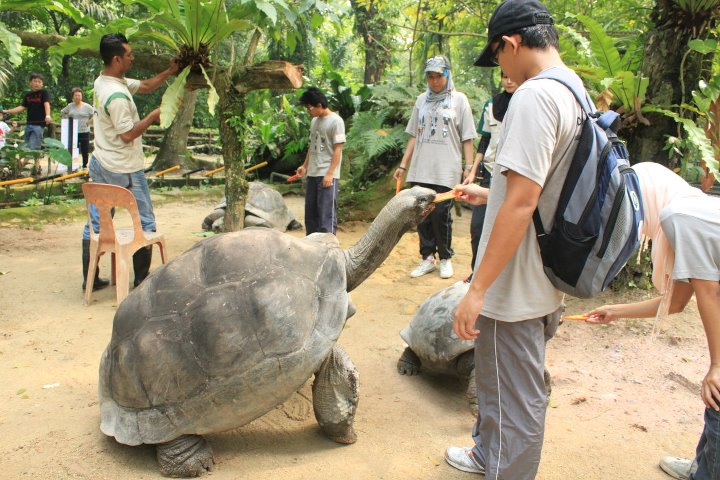By Zairil Khir Johari, MP for Bukit Bendera
 Malaysia is indeed blessed to be a country rich in biodiversity. In fact, according to the Global Biodiversity Outlook published by the Secretariat of the Convention of Biological Diversity, Malaysia is ranked 12th in the world in the National Biodiversity Index.
Malaysia is indeed blessed to be a country rich in biodiversity. In fact, according to the Global Biodiversity Outlook published by the Secretariat of the Convention of Biological Diversity, Malaysia is ranked 12th in the world in the National Biodiversity Index.
With such abundance of wildlife, we should have a national zoo that is capable of reflecting this heritage. It should not only be a mere tourist attraction or wildlife conservatory, but also a proud source of inspiration and education for all Malaysians.
It is with these hopes that Zoo Negara was established in 1963 on 110 acres of land in Ulu Klang, Kuala Lumpur. From its humble beginnings with 89 species of exhibits, it has now grown to house 5,137 specimens from 476 species of mammals, birds, reptiles, amphibians and fish. By 1986, it recorded one million visitors in a year.
However, things have taken a turn for the worse. Today, visitors to the zoo will be disappointed to find a sorry state of animal welfare, as documented in a report by online portal The Ant Daily earlier this year, which detailed how animals were kept in small and muddy enclosures, seemingly undernourished and uncared for.
I have also been informed that Zoo Negara has not had a suitably experienced zoologist for nearly a decade. This is a critical problem, as a senior zoologist is a necessity to ensure proper conservation and care for wildlife.
This decline in the quality is reflected by the fact that visitor numbers have dropped sharply. While Zoo Negara was able to record one million visitors almost 30 years ago, current visitor numbers hover around 600,000 to 700,000 a year, according to its vice-president Rosly @ Rahmat Ahmat Lana.
To make matters worse, Zoo Negara’s entry fee has recently been raised to RM30 for Malaysian adults. This is certainly an extravagant amount for a zoo that does not meet public expectations. Bearing in mind that ordinary Malaysian families make up the majority of visitors, such a high entry would also be a big burden.
In fact, an Astro Awani survey conducted in January this year found that 73.97 per cent of respondents strongly disagreed with the new fees because they felt it was not worth it. While the new panda exhibit may qualify as a justifiable attraction, visitors are actually required to pay an additional RM20 to visit the pandas, bringing the total to RM50 per Malaysian adult.
The drastic drop in visitor numbers compared to three decades ago is a cause for concern, especially when the government continues to provide subsidies. For 2013, RM10.1 million had been allocated to the zoo by the Federal government. On top of that, RM25 million was also allocated for the construction of the panda exhibit.
Despite continuous support from the government and higher entry fees, why hasn’t Zoo Negara been able to improve significantly? It would appear that something is wrong somewhere.
I have received information that MACC reports were lodged against the management of the zoo, alleging corruption and maladministration. This supposedly took place last year, and I have been informed that MACC officers have visited the zoo at least three times over this period.
Unfortunately, my question in Parliament on this issue received an ambiguous reply from Minister in the Prime Minister’s Department, Dato’ Paul Low. According to his reply dated 4 November 2014, the MACC has indeed received information on this issue, but that it is “currently being verified.”
As such, I call upon the Government to be more transparent in this matter, and to reveal the status of the MACC investigation into the alleged corruption and maladministration of Zoo Negara.
In addition, I would like to suggest that a long-term plan is formulated to address not only the administrative issues, but also to transform Zoo Negara into a world-class zoo befitting our country’s rich biodiversity. It is a shame that our national zoo is in such a sorry state when our urban neighbour Singapore is able to boast of a national zoo that has made it into CNN’s “Top 5 Zoos in the World.”



